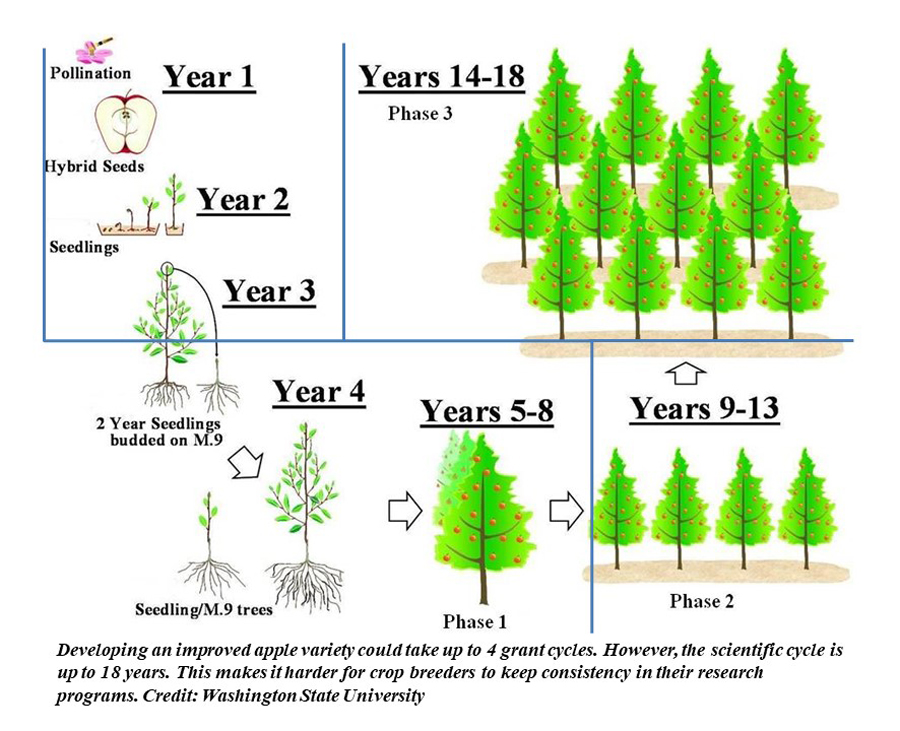January 7, 2021 – Most plant-based foods we eat today are a product of innovative plant breeding programs. The January 7th Sustainable, Secure Food Blog explores the process and importance of plant breeding, and how these programs are at risk of extinction.
According to blogger Kate Evans, “U.S. public investment in plant breeding programs has fallen. The current funding model of short-term grants (1-, 2- or sometimes 5-year awards) is particularly challenging for breeding programs which require typically a 7- to 12-year process, or far longer.”
There’s a lot involved when it comes to crop breeding. Breeders first select plant parents based on desirable characteristics. These could be taste, size, cooking ability, yield, disease resistance and more. They then cross-pollinate, growing seeds that are hybrids of the parents. They are the “children.” These “child” seeds are germinated, nurtured, and then meticulously evaluated. Many inferior seedlings are ultimately discarded, with only a few of them advancing to a new round of parenting.
There are many benefits of plant breeding, including an improved food supply. Unfortunately, plant breeding programs have been struggling to remain afloat as budget shortfalls and other factors have come into play. To learn more, read the entire blog: https://sustainable-secure-food-blog.com/2021/01/07/what-is-the-status-of-public-plant-breeding-programs-in-the-united-states/
About us: This blog is sponsored and written by members of the American Society of Agronomy and Crop Science Society of America. Our members are researchers and trained, certified, professionals in the areas of growing our world’s food supply while protecting our environment. We work at universities, government research facilities, and private businesses across the United States and the world.


